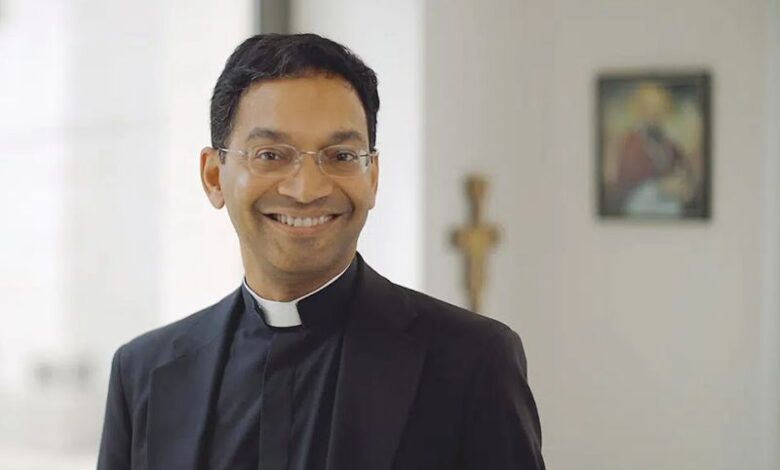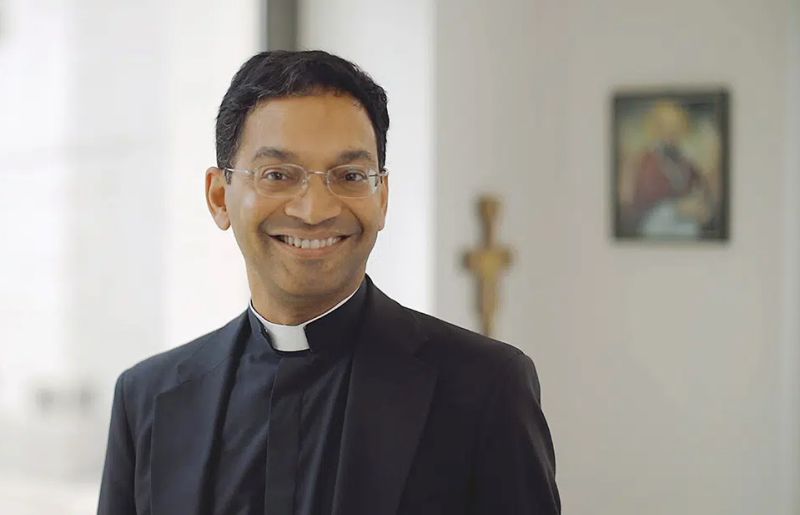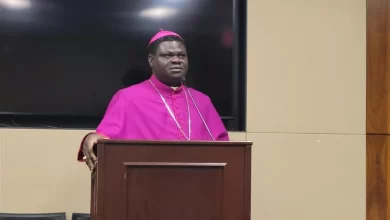Columbus Diocese to close 15 churches; bishop calls for stronger Catholic engagement

 The Vatican on April 2, 2022, announced that Pope Francis had appointed Father Earl K. Fernandes to be the next bishop of the Diocese of Columbus, Ohio. / Courtesy of the Archdiocese of Cincinnati.
The Vatican on April 2, 2022, announced that Pope Francis had appointed Father Earl K. Fernandes to be the next bishop of the Diocese of Columbus, Ohio. / Courtesy of the Archdiocese of Cincinnati. Denver Newsroom, May 26, 2023 / 15:40 pm (CNA).
Ohio’s Catholic Diocese of Columbus will close 15 churches as part of a parish reorganization and merger plan, but Bishop Earl K. Fernandes emphasized new possibilities for growth, especially if lay Catholics take on more responsibility for the Church’s future.
“When I arrived, I said I’m not interested in presiding over 25 years of decline in the diocese,” the bishop said in a May 25 video series at the diocese’s YouTube channel. “I want to grow the church, not for my glory, but for God’s glory,” he said.
Fernandes said the reorganization plan was an effort to “try to come up with the best possible solution for the whole Diocese of Columbus.”
The bishop stressed the need for “an engaged lay faithful” who take shared responsibility for the Church’s mission of evangelization and for the future of their parishes in “authentic collaboration” with clergy.
The diocese serves more than 278,000 Catholics at 108 churches in 23 counties of central Ohio.
The changes are needed due to declining church attendance and fewer young priests, as well as population decline in rural areas and population shifts in the Columbus area, according to WOSU 89.7 NPR News. Two Catholic schools will also close.
At the same time, there are signs of growth in the diocese. The bishop noted a “huge number” of Spanish-speaking people, compared with 10 years ago, as well as an influx of Africans, some of whom speak French. The diocese has 15 new prospective seminarians this year, but those who continue to ordination will still take years of study and preparation.
“Columbus is unique in that it’s growing in the Midwest as a city with lots of jobs coming here,” Fernandes said. “But also Columbus, like many other dioceses, has an aging clergy, so something needed to be done, not just for the retraction of the diocese, but for the mission of evangelization.”
The bishop said the population influx could even mean the construction of new Catholic schools in parts of the diocese.
He said he hoped the planned changes are the foundation for a better future for the diocese. He said he envisions, in 10 or 15 years, parishes that are not simply maintaining what they have but are “actually evangelizing” and “making new disciples.” Parishes should have a “culture of vocations” and “beautiful churches and liturgy.”
The bishop described the diocese as “top-heavy” in aging clergy, with 12 priests over age 70 still working as parish pastors.
“Priests should be able to enjoy their retirement,” he said. “We knew we were going to have to make decisions and have pastors who have the energy and the leadership abilities to help parishes come together, to evangelize and to pastor multiple parishes.”
Religious orders have a growing presence in the diocese and are serving at various parishes, especially if they are prepared to serve ethnic communities and Spanish speakers. Capuchin Franciscan priests will arrive this summer to staff two churches in a newly merged parish, the diocese’s newspaper The Catholic Times reported.
The diocese’s reorganization process, titled “Real Presence, Real Future,” began in 2019 under Fernandes’ predecessor, Bishop Robert Brennan. The first draft of the reorganization model was released in fall 2021 and final recommendations were presented to the bishop in fall 2022. Final recommendations to Fernandes slated 19 churches for closure, but the bishop said he made adjustments based on input from parishioners and priests.
CNA contacted the Diocese of Columbus for comment but did not receive a response by publication.
The Columbus Diocese borders the Diocese of Steubenville. A proposal to merge the two dioceses was put on hold in November 2022.






